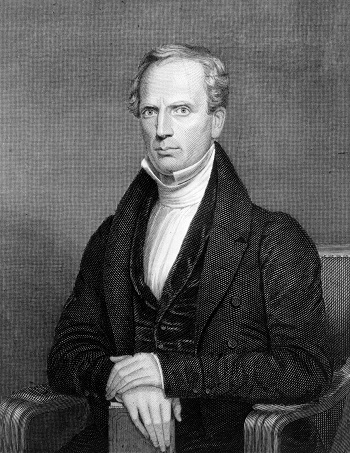

Preliminary Reading
To help with the historical context, we recommend reading about the revivals that had been previously occurring in other New England states. Those revivals can be read with these accounts:
► 1790-1840 Second Great Awakening
► 150 New England Revivals (1797 – 1814)
► 1815-1840 Upstate New York Revivals
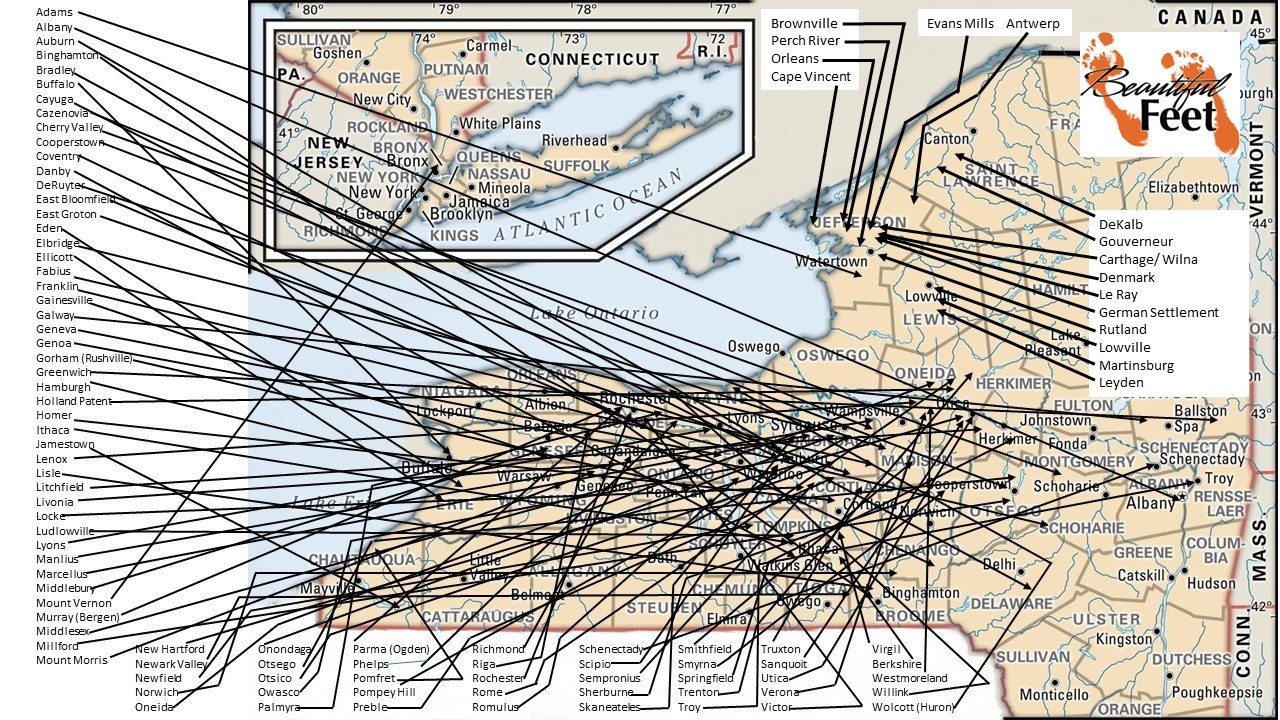
State of New York: The black lines indicate locations where
the revival spread over the next decade.
The area became known as the “Burned-Over District.”
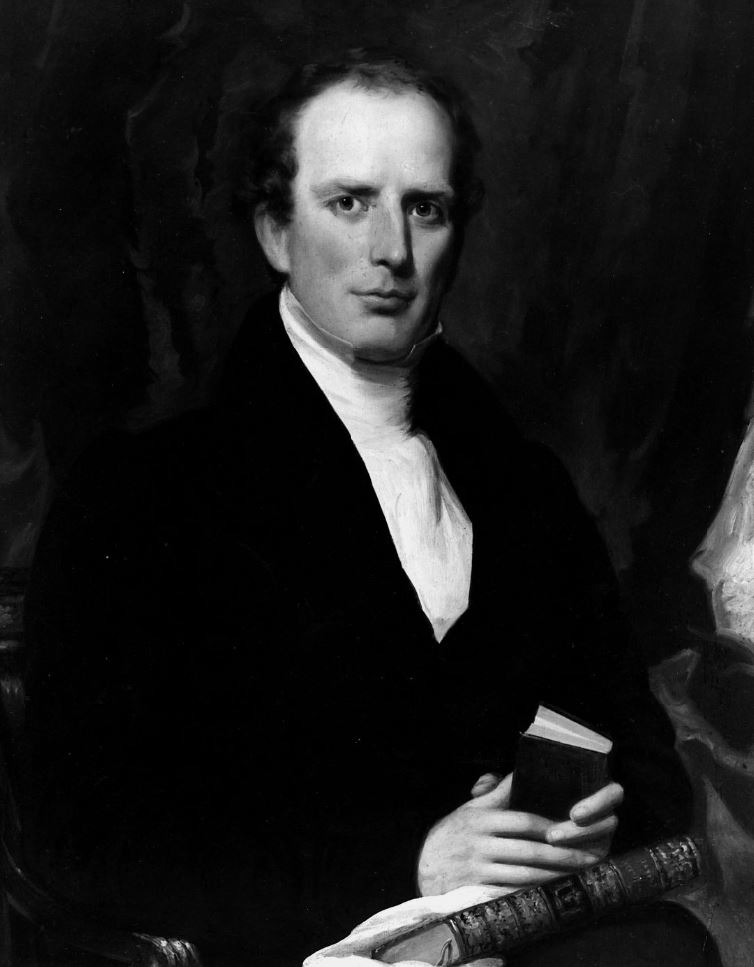
Charles Grandison Finney – Father of modern revivalism and the leading figure of the Second Great Awakening
Introduction
Charles G. Finney (1792-1875) was raised in Oneida County, New York, which at that time was still considered a wilderness. There were no Sunday Schools or opportunities for religious education, leaving the people with no religious convictions. The few ministers that passed through were described as uneducated, and laughably so.
Finney’s conversion in 1821, at 29 years of age, was extremely dramatic, and was accompanied by a powerful baptism of the Holy Spirit. You can read about it here. Immediately following his conversion, he abandoned his promising career as a lawyer and by 1824 was ordained as a Presbyterian minister. By 1827 he had “risen to national prominence as the most effective evangelist in the West.”
Finney’s unique methods of evangelism earned him the title of being the “father of modern revivalism.” His methods paved the way for other mass-evangelists, like Dwight L. Moody, John W. Chapman, Billy Sunday, and Billy Graham, who adapted and built upon Finney’s methods.
Condition of Other Churches throughout Oneida County
According to the reports of ministers, all the churches were in a slump.
► The moral conditions of the towns were dark.
► People pursued their pleasure or business.
► Sunday school, prayer meetings, and regular church attendance were neglected.
► Church services were formal and cold.
► Prayers were said to be faithless.

Over a dozen towns in Oneida County experienced revival at about the same time as the Rome, New York Revival.
The Rome Connection
As the Western, New York Revival was underway, news of what God was doing there reached the town of Rome, which is located about 13 miles to the south. The Congregational minister in Rome, Rev. Moses Gillet, along with the Sunday school superintendent, Catherine Huntington, made a trip to Western to see firsthand what was occurring.
With both being impressed at seeing what God was doing, they made their second trip to Western a few days later, and it was during this time that Gillet said to Finney:
Brother Finney, it seems to me that I have got a new Bible. I never before understood the promises as I do now; I never got hold of them before. I cannot rest… my mind is full of the subject and the promises are new to me.
Swapping Pulpits
When the revival at Western was going strong, Gillet requested that he and Finney swap pulpits on a particular Sunday—Gillet to preach in Western, and Finney to preach in Rome. Finney agreed, and he preached three times on the Sunday he was there, as well as on Monday morning.
During his sermons in Rome, Finney witnessed the following:
To me it was perfectly manifest that the Word took great effect. I could see during the day that many heads were down, and that a great number of them were bowed down with deep conviction for sin.
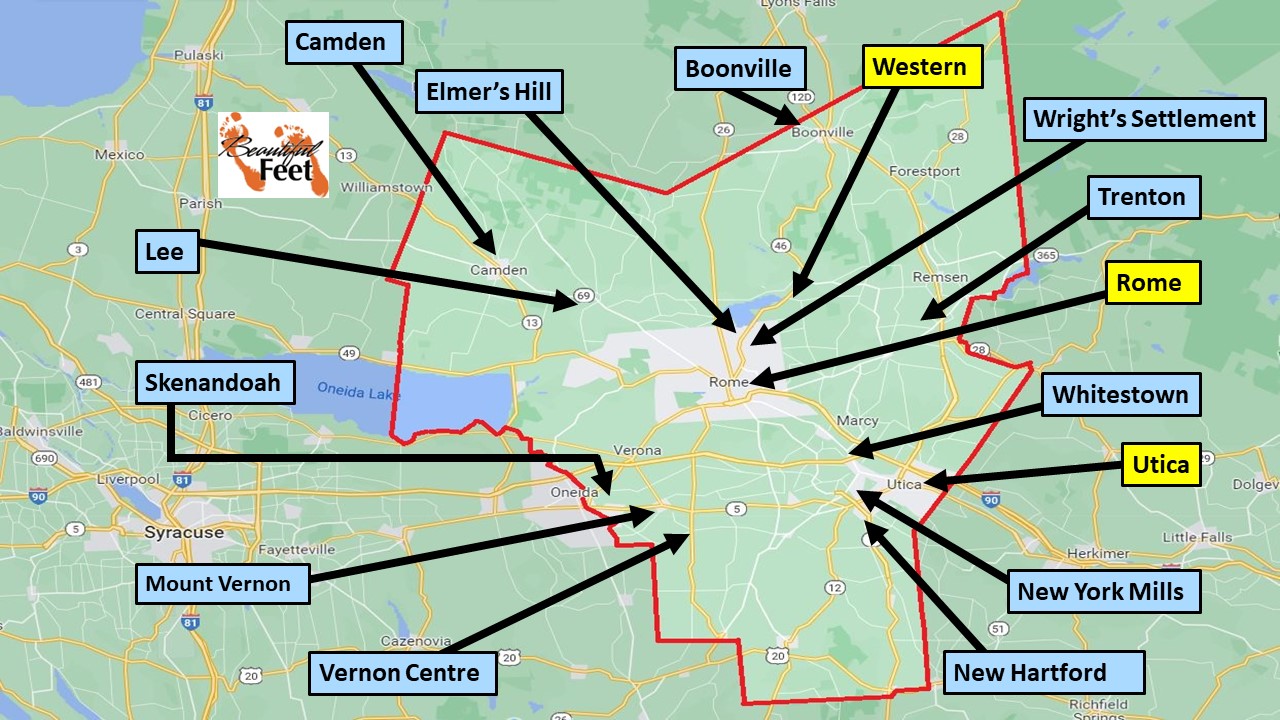
Oneida County, New York: The yellow shaded locations are those mentioned in this account. The blue ones are locations where the revival spread during the coming year. Those revivals can be read with this link.
Inquirer’s Meeting
After Gillet returned to Rome on Monday, Finney informed him of the response to his preaching, and Gillet suggested they schedule an inquirer’s meeting and wanted Finney to be in attendance. (Inquirer’s meetings were special meetings for those who were concerned for the state of their souls and wanted to receive salvation.)
Finney agreed to be present for the meeting, so the news was circulated by word-of-mouth that the meeting would be held that night in the home of one of the deacons.
When the meeting was to start it was noticed that the room was filled with people severely convicted of sin. These were said to be some of “the most intelligent and influential members” of the Congregational church. The emotional condition of the people was so intense that Finney and Gillet were not able to speak with them. Of that time, Finney wrote:
Only a few words of conversation would make the stoutest men writhe on their seats as if a sword had been thrust into their hearts. It would probably not be possible for one who had never witnessed such a scene to realize what the power of the truth sometimes is in the hands of the Holy Ghost. It was indeed a sword, and a two-edged sword. The pain that it produced… would create a distress that seemed unendurable.
Finney then pointed the people to Christ for the unburdening of their sins. He then knelt in the middle of the room and prayed for their salvation.
The agitation deepened every moment; and as I could hear their sobs, and breathing, and sighs…
At this moment, a young man… so nearly fainted that he fell on some young men that stood near him; and they all of them partially swooned away, and fell together.
Gillet, writing of this occasion in “A Narrative of the Revival of Religion” said:
… The last week in December, [1825] a meeting of inquiry was held for convicted sinners. Mr. Finney came here that evening, and remained four weeks, and was a distinguished instrument in promoting the revival. The meeting of inquiry was at a private house, and a prayer meeting at a school house at the same time. The room was filled with inquiring sinners. After prayer, personal conversation, and a short address, we dismissed them. Instead of retiring, they partly fell upon each other, and gave vent to their feelings in sobs and groans. It was with difficulty we prevailed upon them to retire.
Not wanting to be accused of stirring uncontrollable emotions, Finney quickly dismissed the people with the command to suppress their emotions on the streets as they returned home. As they were exiting the room they were sighing and sobbing. To suppress his emotions, one young man had to use all of his strength in holding his hand over his mouth till he got home. When he entered the door of his home he could no longer hold it in, and
He shut the door, fell upon the floor, and burst out into a loud wailing in view of his awful condition. This brought the family around him very quick, and scattered conviction among the whole of them.
Finney learned later that that scene was repeated as others from the meeting entered their homes.
Convictions were so deep and universal that we would sometimes go into a house and find some in a kneeling posture, some prostrate on the carpet, some bathing the temples of their friends with camphor, and rubbing them to keep them from fainting, and as they feared, from dying.
Number of Conversions in Rome
Finney reported that during the 20 days of his ministry in Rome there were 500 conversions.
As the work proceeded it gathered in nearly the whole population. Nearly every one of the lawyers, merchants, and physicians, and nearly all the principle men, —and indeed nearly all the adult population of the village were brought in…
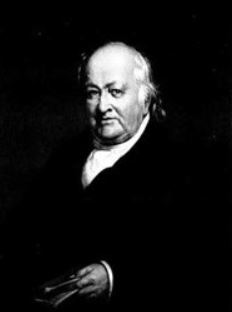
Henry Huntington
Most Prominent Individual Converts
Henry Huntington was the most influential and wealthiest man in the county. He was the president of the bank in Utica, as well as a representative of the Western District of the state in the state senate. This man was a skeptic of the revival, and this led Finney and a few others to “assemble one afternoon to make him a special subject of prayer.”
That very evening, following special prayer for him, Huntington came to the church service and was converted. He even came to the front of the sanctuary to indicate his conversion publicly.
Daily Schedule
► For 20 straight nights Finney preached, and on Sundays he preached two times.
► There were daily prayer meetings.
► With the number of people wanting to convert, there were inquirer’s meetings held three times per week.
The Atmosphere
► There was an awe that blanketed the town, making everyone feel as if God was there.
► The sheriff of Oneida County, Charles C. Broadhead, who had been a skeptic of the revival, said that as he approached the town of Rome, about one mile away, “an awful impression came over him, and awe so deep that he could not shake it off. He felt as if God pervaded the whole atmosphere. He said that this increased the whole way till he came to the village.” When he arrived in Rome “he was afraid to speak.” When he went into a home, “He said that several times … he had to arise from the table abruptly and go to the window and look out, and try to divert his attention, to keep from weeping.” He said that others felt just as he did. A few weeks later he was converted.
► “Ministers came in from neighboring towns, and expressed great astonishment at what they saw and heard, as well they might.” And, “they carried it [the revival] home with them.”
► “Conversions multiplied so rapidly that we had no way of learning who they were.”
► “A merchant came into the meeting” and “found a seat in front of me & near where I stood speaking. He had sat but for a few moments when he fell from his seat as if he had been shot. He writhed and groaned in a terrible manner.” “A skeptical physician … examined the man … and it took his skepticism entirely away.”
► “During one week, it is said, scarcely any secular work was done, so intent were the people on the great concerns of the soul.”
Other Results of the Revival
► Early morning prayer was conducted for more than a year following the revival.
► “Go where you would you heard the voice of prayer. Pass along the streets, and if two or three Christians happened to be together they were praying.”
► “Wherever there was a sinner unconverted, especially if he manifested opposition, you would find some two or three brothers or sisters agreeing to make him a particular subject of prayer; and it was very remarkable to see to what an extent God would answer prayer immediately.”
► Rome did not seem like the same place.
► “Sin was left to hide its head. No open immorality could be tolerated there for a moment.”
► All through the spring and summer of 1826, there were meetings held every night.
► “For eleven months, there has been no time when sinners were not under conviction.”
Opposition from Ministers
One of the criticisms Finney received from other ministers was the simplicity of his sermons, as he would frequently use illustrations from daily life: farming, mechanics, and any occupation. He would also use language that common people would understand—without them having to use a dictionary to understand his vocabulary—something quite different from other ministers. This led these ministers to accuse Finney of letting “down the dignity of the pulpit.”
The ministers said Finney would never be able to convert the more educated people in the community by preaching like that, but they were wrong, as judges, lawyers, physicians, and others of the educated class were converted through his ministry.
Another major criticism was permitting women to play an active role in ministry, as Finney encouraged them to:
► Pray and exhort during church services.
► Evangelize and conduct prayer meetings outside church services.
Opposing ministers called the utilization of women during church services “promiscuous assemblies.”
At the time Finney ignored the opposition, because
Those of us who were engaged in them [the revivals] had our hands too full, and our hearts too full, to turn aside to reply to letters, or reports, or publications that so manifestly misrepresented the character of the work.
Methods Finney Used in the Promotion of the Revival
► Daily preaching, over a period of days or weeks—using churches, homes, barns, schoolhouses, and the open air
► Private and corporate prayer meetings
► Teaching conferences
► A lot of personal conversation by making visits to homes
► Meetings for those inquiring about the condition of their souls
► Encouraging the immediate reception of new converts as members in churches
► Allowing women to pray and exhort during church services
► Utilizing women’s prayer groups to capitalize on existing social networks for evangelism
► During his sermons those who felt the conviction of sin and their need of a Savior were invited to come to the front to sit in the pew reserved for them. This pew was called the “anxious seat.” Others have termed this the “mourners’ bench.”
► Praying for people publicly by name
► Distributing leaflets for advertisement
Primary Sources
► 1826 Revival in Oneida County, New York by Beautiful Feet
► A Narrative of the Revival of Religion in the County of Oneida by Presbyterian Church in the USA
► Chapter XIII Revival at Rome: The Memoirs of Charles G. Finney by Charles G. Finney
► Lectures on Revivals of Religion: Lecture XIV by Charles Finney
► The Memoirs of Charles G. Finney: The Complete Restored Text by Charles G. Finney
Secondary Sources
► Charles G. Finney by Wikipedia
► Charles Grandison Finney & the Second Phase of the Second Great Awakening by Christian History Institute
► Eerdman’s Handbook to Christianity in America by Mark A. Noll
► Fire From Heaven by Robert Evans
► Great Revivals and the Great Republic by Warren Candler
► Man of Like Passions: The Life Story of Charles Grandison Finney by Richard E. Day
► Memoirs of Revivals of Religion by Charles G. Finney
► Memoir of the Life and Character of Rev. Asahel Nettleton by Bennet Tyler
► New England Revivals by Bennet Tyler
Return to List of Revival Stories
Chet & Phyllis Swearingen:
Office: (260) 920-8248
romans1015@outlook.com
Beautiful Feet
P.O. Box 915
Auburn, IN 46706

